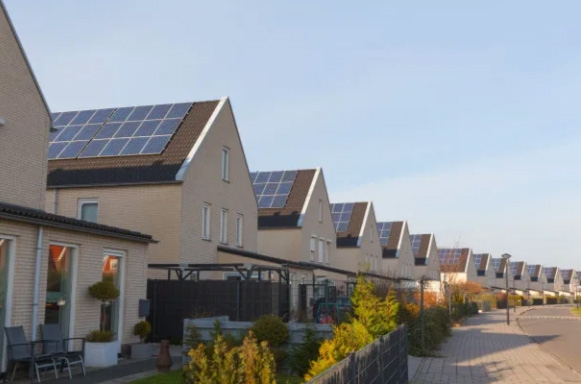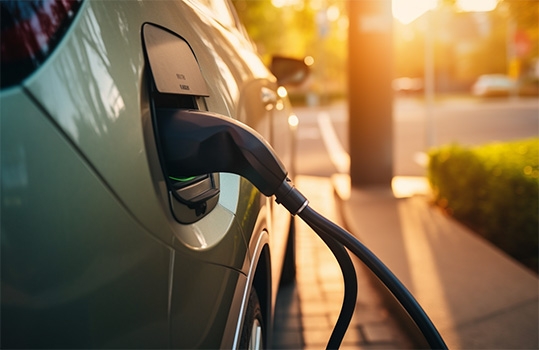In an era of escalating climate change concerns and dwindling fossil fuel reserves, the quest for sustainable and renewable energy sources has become paramount. Among the various options available, solar energy stands out as a promising solution due to its abundant availability and minimal environmental impact. This article explores the future of clean energy with a focus on solar power, examining its current status, advancements, challenges, and potential role in shaping a sustainable energy landscape.
The Current Status of Solar Energy:
Solar energy harnesses the power of the sun through photovoltaic (PV) cells that convert sunlight into electricity. Over the past decade, the solar industry has experienced exponential growth. This growth can be attributed to several factors, including falling costs, technological advancements, and supportive government policies.
According to Home Power Inverter's survey data, the cost of solar PV modules has plummeted by more than 80% since 2010, making solar energy increasingly competitive with traditional fossil fuels. This cost reduction is driven by economies of scale, improvements in manufacturing processes, and advancements in PV technology. Additionally, many countries have implemented incentives such as tax credits, feed-in tariffs, and renewable energy mandates to encourage the adoption of solar power.

Technological Advancements:
The future of solar energy is bright, thanks to continuous technological innovations. Some of the most significant advancements include:
- High-Efficiency Solar Panels: Researchers are developing PV solar panels with higher efficiency rates, which can convert more sunlight into electricity. For instance, perovskite solar cells have shown remarkable efficiency improvements, potentially surpassing traditional silicon-based cells.
- Bifacial Solar Panels: These panels can capture sunlight on both sides, increasing energy production. Bifacial panels are particularly effective in environments with high albedo, such as snowy or sandy regions.
- Floating Solar Farms: Installing photovoltaic panels on bodies of water, such as lakes and reservoirs, helps save land space and can increase energy production due to the cooling effect of water.
- Solar Storage Solutions: Advances in battery technology are crucial for addressing the intermittent nature of solar power. Lithium-ion batteries and emerging technologies like solid-state batteries are becoming more efficient and affordable, enabling better energy storage and grid stability.
- Building-Integrated Photovoltaics (BIPV): Integrating solar cells into building materials, such as windows and facades, allows for the generation of electricity without the need for separate solar panels, optimizing space usage in urban areas.
Challenges to Overcome:
Despite its potential, solar energy faces several challenges that must be addressed to ensure its widespread adoption and sustainability:
- Intermittency: Solar power generation depends on sunlight availability, which varies with weather conditions and time of day. This intermittency requires robust energy storage solutions and grid management strategies to ensure a reliable power supply.
- Land Use and Environmental Impact: Large-scale solar farms require significant land areas, which can impact ecosystems and land use patterns. Balancing the need for renewable energy with environmental conservation is crucial.
- Initial Investment Costs: While the cost of solar photovoltaic panels has decreased, the initial investment for installation can still be a barrier for some individuals and communities. Financial incentives and innovative financing models can help mitigate this challenge.
- Grid Integration: Integrating a high share of solar power into existing electricity grids requires upgrades and modifications to accommodate variable energy inputs. Advanced grid technologies and smart grid solutions are essential for efficient integration.

The Role of Solar Energy in a Sustainable Future:
Solar energy is poised to play a central role in the transition to a sustainable and low-carbon energy future. Several factors contribute to this potential:
- Decarbonization: Solar energy generates electricity without emitting greenhouse gases, making it a key component of efforts to combat climate change. As countries strive to meet their carbon reduction targets, solar power will be instrumental in reducing reliance on fossil fuels.
- Energy Access: Solar energy can provide electricity to remote and underserved regions, improving access to energy and supporting economic development. Off-grid inverters, coupled with off-grid solar solutions such as home solar systems and mini-grids, are already changing lives in rural areas.
- Economic Growth: The solar industry creates jobs and stimulates economic growth. From manufacturing and installation to maintenance and research, the sector offers numerous employment opportunities.
- Innovation and Collaboration: The rapid pace of innovation in solar technology, coupled with international collaboration, can accelerate the deployment of solar energy solutions. Public-private partnerships, research initiatives, and global cooperation are essential for overcoming technical and financial barriers.
The future of clean energy lies in harnessing the power of the sun. Solar energy, with its abundant availability, declining costs, and continuous technological advancements, holds immense potential to drive the global transition to a sustainable energy system. While challenges remain, concerted efforts in research, policy, and infrastructure development can unlock the full potential of solar power. Home Power Inverter is also working on this. As we look towards a future powered by clean energy, solar energy will undoubtedly be at the forefront, illuminating the path to a greener and more sustainable world.
